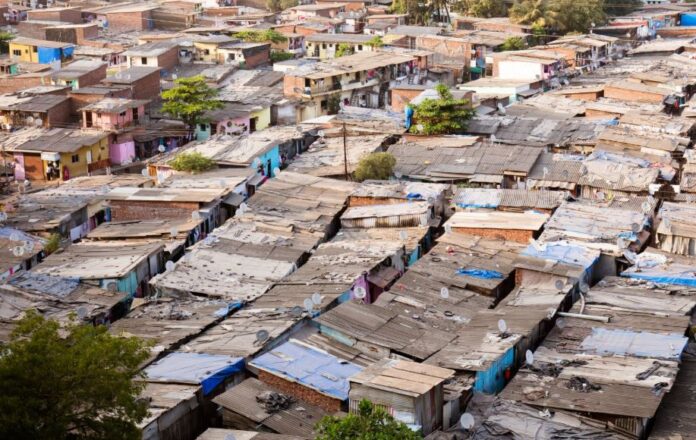A recent dataset highlighting the percentage of urban populations living in slums paints a stark picture of global urban inequality, with some nations facing extreme challenges in housing and infrastructure. The figures, which vary dramatically across countries, underscore the persistent issue of inadequate living conditions in urban centers, particularly in parts of Africa and South Asia.
South Sudan tops the list, with a staggering 94% of its urban population residing in slums, followed closely by Chad at 82% and Sudan at 74%. These numbers reflect severe developmental hurdles, including ongoing conflict, poverty, and limited access to basic services like clean water and sanitation. Afghanistan (73%) and Niger (70%) also rank among the highest, where rapid urbanization has outpaced the development of formal housing and infrastructure. Central African Republic (69%) and Ethiopia (64%) face similar struggles, with large segments of their urban populations living in makeshift settlements.
In contrast, countries like Kazakhstan and Ukraine report just 1% of their urban populations in slums, showcasing stronger urban planning and economic stability. Other nations with relatively low slum populations include Vietnam (6%), Thailand (7%), and Ireland (9%), where investments in housing and infrastructure have mitigated urban poverty to a significant degree.
India’s Finacial Capital Mumbai alone has an estimated 9 Million slum dwellers which is greater than the total population of countries like Austria or Switzerland.
The data also reveals regional disparities. In South Asia, Pakistan (56%), Bangladesh (52%), and India (49%) grapple with high slum populations, driven by rapid urban migration and limited affordable housing. In Latin America, Ecuador stands out with 58% of its urban population in slums, while Brazil (15%) and Argentina (16%) fare better. Sub-Saharan Africa remains the most affected region, with countries like Nigeria (49%) and Kenya (51%) facing significant challenges.
Also Read: Nike Faces Lawsuit Over Closure of Crypto Business and Losses from Nike-Themed NFTs
These figures highlight the urgent need for targeted urban development policies, including affordable housing initiatives and improved access to basic services. As global urbanization accelerates, addressing the slum crisis will be critical to achieving equitable and sustainable cities.
Key Points on Urban Populations Living in Slums
Extreme Slum Prevalence: South Sudan (94%), Chad (82%), Sudan (74%), Afghanistan (73%), and Niger (70%) have the highest urban slum populations, fueled by conflict, poverty, and weak infrastructure.
Sub-Saharan Africa Hit Hard: Central African Republic (69%), Ethiopia (64%), Nigeria (49%), and Kenya (51%) face major slum challenges due to rapid urbanization and limited resources.
South Asia’s Urban Struggle: Pakistan (56%), Bangladesh (52%), and India (49%) see nearly half or more of urban residents in slums, driven by housing shortages and migration.
Latin America Disparities: Ecuador (58%) has a high slum population, while Brazil (15%) and Argentina (16%) show more progress in urban housing.
Lowest Slum Rates: Kazakhstan and Ukraine (1%), Vietnam (6%), Thailand (7%), and Ireland (9%) boast low slum populations, reflecting effective urban planning.
Global Inequality: Slum populations range from 1% to 94%, highlighting vast differences in urban living conditions worldwide.
Urgent Action Needed: High slum rates call for robust policies on affordable housing, infrastructure, and sustainable urban development to tackle the global slum crisis.



